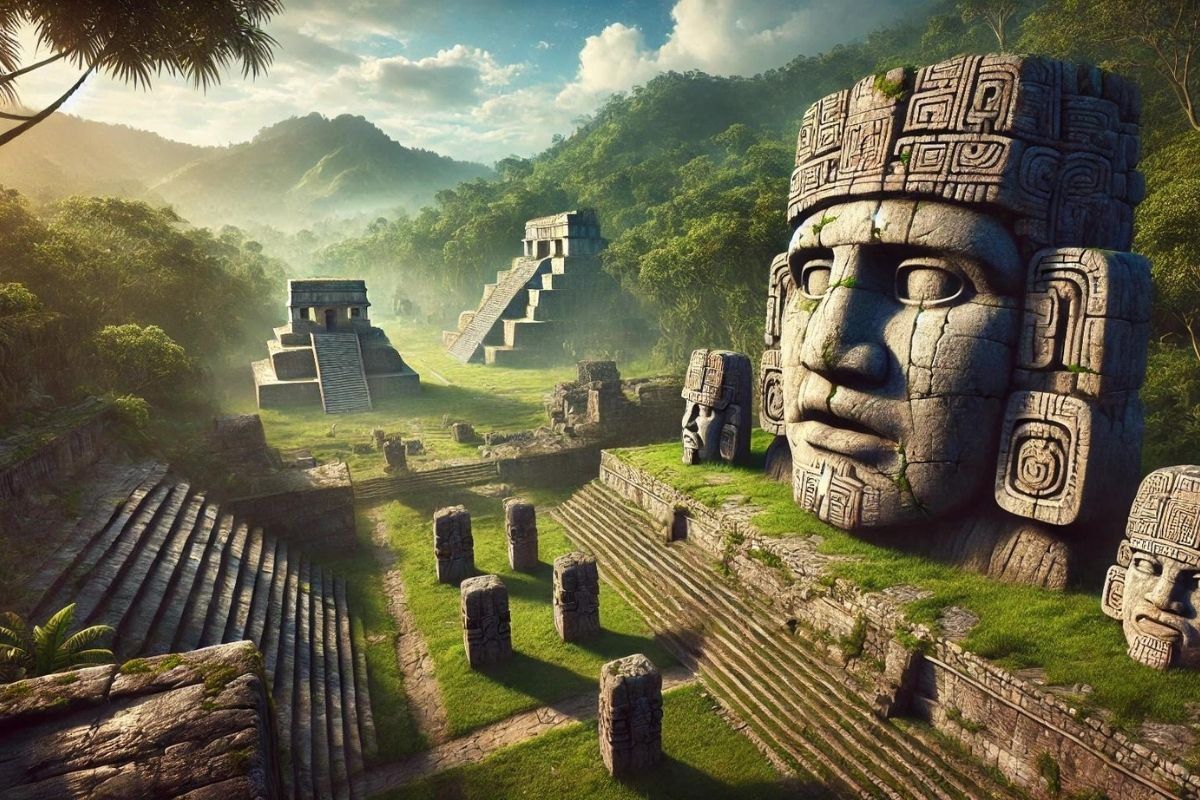The beginning of civilization in Mesoamerica denotes a crucial part of the human story, highlighting a complicated embroidery of societies that molded the historical backdrop of the Americas well before European contact. The subject of “What was the first civilization in Mesoamerica” acquaints us with the Olmecs, a general public whose developments and social practices laid the basis for all resulting Mesoamerican civilizations.
The Olmecs: Mesoamerica’s Fundamental Civilization
The Olmecs are broadly perceived as the first significant civilization in Mesoamerica, arising around 1600 BCE in what is currently the southern piece of Mexico. Frequently alluded to as the “mother culture” of Mesoamerica, the Olmecs fostered a general public with refined craftsmanship, design, and strict practices that impacted later societies like the Maya and the Aztecs.
The core of Olmec civilization was in the tropical swamps of the Mexican territories of Veracruz and Tabasco, a locale wealthy in assets that worked with the ascent of such an early and complex society. The Olmecs dominated the cruel Mesoamerican wildernesses, getting huge areas for improvement free from their urban communities, the most remarkable being San Lorenzo and La Venta. These urban communities were focused on political power and strict life, highlighting gigantic stone designs, including the monster head molds that remained notable portrayals of Olmec workmanship.
The Olmecs were likewise spearheaded in fostering the Mesoamerican ballgame, which held both playful and custom importance. They laid out shipping lanes that spread their impact all through the area, trading jade, obsidian, and ceramics that were essential for monetary and ceremonial purposes.
Innovations and Commitments of the Olmec Civilization
The Olmecs’ commitments to Mesoamerican civilization are significant, including a few fields from water-driven designing to cosmic perception. One of the main developments credited to the Olmecs is the improvement of the Mesoamerican Long Count schedule, a complex framework for the following time that was subsequently refined and utilized by the Maya.
Notwithstanding their accomplishments in timekeeping, the Olmecs are accepted to have been among the first to utilize and control elastic, from which the name ‘Olmec’ — derived from the Aztec word ‘elastic individuals’ — is remembered to start. They used elastic not just for making balls utilized in their stately ballgames but additionally for different devices and trimmings.
The format of Olmec urban areas mirrors areas of strength for a metropolitan preparation and design, with stylized focuses that line up with galactic occasions. These arrangements recommend that the Olmecs had a profound comprehension of the divine cycle, which was necessary to their horticulture, strict services, and folklore.
Religious Convictions and Creative Expressions
The strict existence of the Olmecs was rich and mind-boggling and revolved around a pantheon of divinities, including the conspicuous “Were-puma” god, a figure that shows up in quite a bit of their model and other imaginative portrayals. This divinity, frequently portrayed as a mix of a panther and a human, highlights the Olmec’s respect for both the regular world and strong, extraordinary gods.
Olmec workmanship is described by its titanic head models, created from single blocks of basalt and moved across numerous miles, which shows the Olmecs’ imaginative ability as well as their designing ability. These heads, accepted to be portrayals of rulers or gods, are stupendous in scale and detail, with each highlighting particularly individual facial elements, recommending a serious level of authenticity and personalization.
The Tradition of the Olmec Civilization
The downfall of the Olmec civilization around 400 BCE didn’t lessen their impact on Mesoamerica. The establishments they laid in religion, workmanship, design, and metropolitan arranging kept on affecting every one of the ways of life that followed. The Maya, for instance, acquired and adjusted the Olmec calendrical framework and ballgame, both focal parts of Mesoamerican culture and cosmology.
Additionally, the Olmecs’ exchange networks laid out correspondence and trade courses that would be utilized for quite a long time by their replacements. These organizations worked with the trading of merchandise as well as the spread of thoughts and strict convictions across Mesoamerica, assisting with making a common social and strict structure among different social orders.
While inquiring “What was the first civilization in Mesoamerica,” we track down that the Olmecs hold the title as well as deserve a significant admiration for their broad commitments to the improvement of later civilizations. Their heritage is a demonstration of their job as the key part of the complex social development of old Mesoamerica, making them one of the significant civilizations throughout the entire existence of the Americas.


